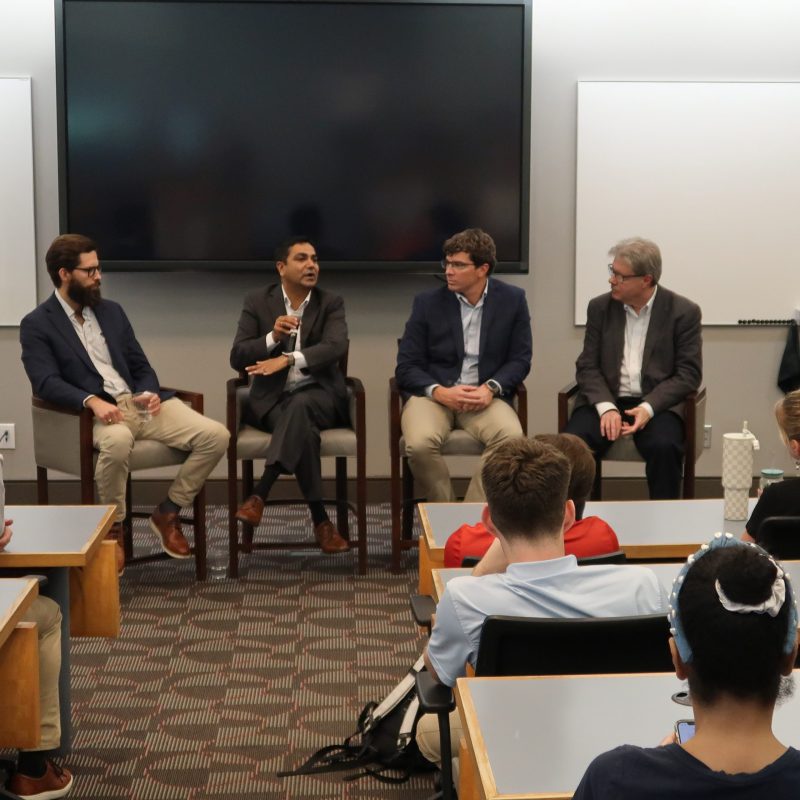Culverhouse and UA students showed strong business analytics skills earlier this month, winning prizes at Culverhouse Business Analytics Symposium poster competition and at the 2024 Institute of Data and Analytics Hackathon.
The Symposium
The Culverhouse Business Analytics Symposium, recently held on October 3-4, has evolved over the years to become a showcase of industry trends as well as UA and Culverhouse expertise, both from faculty and students.
Part of the agenda was a poster session that highlighted student data-focused research.
The first-place winner, who won $1,500, was Atta Ur Razzaq (chemical and biological engineering). The second and third-place winners were both Culverhouse/Manderson students: Ali Zadeh (ISM) won second place and took home $1,000, and Susan Rykowski (accounting) took third and $500.
In a change from previous years, the symposium began with an optional set of presentations on Thursday, starting in the morning with two talks from researchers involved with IDA’s Southern Regional Drug Data Research Center (DDRC), an initiative funded by the United States Department of Justice’s Bureau of Justice Assistance to help communities across the Southeast combat the opioid crisis. Thursday afternoon, Drs. Jef Naidoo and Dwight Lewis, along with three Culverhouse students, presented a workshop about data visualization. A panel discussion about generative AI completed the day, the panel consisting of three industry data practitioners and Culverhouse’s Dr. Jim Cochran (photo; Dr. Quinn Swanquist not pictured).
The second day of the symposium was presentations from data analytics professionals in various industries, including Jeremy Dumond of Land O’Lakes, Allison Martel of Thomson-Reuters, and Reeyaz Hamirani of Paramount Pictures.
The Hackathon
Approximately 40 UA students from a range of majors across campus tackled a thorny data analytics problem at the 2024 Institute of Data and Analytics Hackathon on October 5-6, with the purpose of using analytics to solve a complex business problem and communicate their solutions to stakeholders. The students used historical data to devise an inventory and material handling strategy for a fictional vehicle manufacturer. The problem had several sources of uncertainty, and participants had to utilize simulation and optimization techniques to identify and evaluate potential solutions. Participant teams then made presentations that four judges from the automotive manufacturing industry (including employees of Mercedes-Benz) evaluated, with the top three teams being selected and receiving monetary awards. Two Manderson students, Deep Singh and Christian Hrischey, were among the winners.
The first-place winners were Nathan Hubbell, Trenton Ottman, Evan Poirier, Priyanshu Sethi, and Gavin Ward. Second-place winners were Ryan Joesting, Jaxson Liening, and Deep Singh (MSBA). And third-place winners were Christian Hrischey (MBA), Brandon Kantorski, and Khushi Modi.

